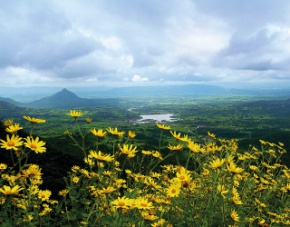
A trip to the Mulu Heritage Park should at least be 4 night and 5 days so that it allows students to explore these activities curated for this module comfortably, with clear learning outcomes.
Given below are a few activities that can be conducted at this destination, along with the appropriate age group. Our forte is customisation, so feel free to select ONE, ALL or ANY combination of these activities to design a trip unique to your curriculum and experiential learning needs.
A nocturnal exploration of the forest paths of the park, will give students an opportunity to see, hear and experience the night sights and sounds of the Bornean rainforest wached over by a canopy of stars. From fireflies to luminescent fungi, the forest is alive at night with the activities of many nocturnal species that are endemic to this region and is an unforgettable experience.
These caves boast of the world’s largest cave passage and are home to twelve species of bats that have been recorded within the Deer Cave, including the colony of Wrinkled-Lipped Bats estimated to number between 2.5 and 3.5 million individuals. When the bats fly out, it’s a spectacle of nature’s magnificence and bounty that lasts for hours.
These caves are accessed through a cruise up the Melinau River in a traditional longboat where one can stop at the local Penan longhouse market en route. A 500-meter rainforest path brings you to the cave entrance where students will begin their 1.5 km underground adventure exploring the geological formations and understanding the cave ecology with the help of expert guides.
The Mulu Skywalk, is the world’s longest tree based canopy walk stretching for 480 metres suspended about 20 metres above the forest floor. A canopy walk on this walkway winds among the lush tree cover with tranquil river views below and the soaring heights of the nearby limestone cliffs. Exploring the arboreal forest is a unique experience providing a different perspective.
This is an enchanting walk that takes you through the Deer Cave to where the Bat exodus takes places. The route comes across waterfalls and streams, showcasing the beautiful scenery of the region.
CONSERVATION CONCERN
Made up of 3 countries in 746,000 sqkm of land, Borneo’s forests are home to 221 species of mammals, 620 species of birds, 35% out of its 15,000 plant species that are found nowhere else and over 150 species of dipterocarp trees. In each tree, there are 1,000 insect species. And that’s just a rough estimate. Over the past ten years, 360 new species have been found.
Borneo’s dipterocarp forests are threatened by land conversion to plantation, lack of income-generation for rural communities, immigrant farmers, coal mines, access roads and fire.

Related Destinations

Region: Vietnam
Active Modules: Speleology Expeditions, Life Skills Expeditions

Region: India
Active Modules: Speleology Expeditions, Life Skills Expeditions

Region: India
Active Modules: Marine Ecosystem Exploration, Life Skills Expeditions

Region: India
Active Modules: Marine Ecosystem Exploration, Project Based Trips, Service and Sustainability

Region: India
Active Modules: Life Skills Expeditions, Project Based Trips

Region: India
Active Modules: Terrestrial Ecosystem Exploration, Service and Sustainability

Region: India
Active Modules: Life Skills Expeditions, Service and Sustainability

Region: Thailand
Active Modules: Marine Ecosystem Exploration, Service and Sustainability, Project Based Trips

Region: India
Active Modules: Terrestrial Ecosystem Exploration, Project Based Trips, Service and Sustainability

Region: India
Active Modules: Terrestrial Ecosystem Exploration, Project Based Trips, Service and Sustainability

Region: Vietnam
Active Modules: Life Skills Expeditions, Service and Sustainability

Region: Borneo
Active Modules: Terrestrial Ecosystem Exploration, Project Based Trips

Region: Borneo
Active Modules: Life Skills Expeditions, Service and Sustainability, Marine Ecosystem Exploration

Region: Greece
Active Modules: Marine Ecosystem Exploration, Life Skills Expeditions, Service and Sustainability, Project Based Trips

Region: India
Active Modules: Terrestrial Ecosystem Exploration, Project Based Trips

Region: India
Active Modules: Life Skills Expeditions, Project Based Trips, Service and Sustainability

Region: India
Active Modules: Project Based Trips, Life Skills Expeditions, Service and Sustainability, Terrestrial Ecosystem Exploration

Region: India
Active Modules: Terrestrial Ecosystem Exploration, Project Based Trips, Service and Sustainability

Region: India
Active Modules: Life Skills Expeditions, Project Based Trips, Service and Sustainability, Terrestrial Ecosystem Exploration

Region: India
Active Modules: Life Skills Expeditions, Project Based Trips, Service and Sustainability

Region: India
Active Modules: Life Skills Expeditions, Project Based Trips, Service and Sustainability

Region: India
Active Modules: Terrestrial Ecosystem Exploration, Project Based Trips, Life Skills Expeditions
























